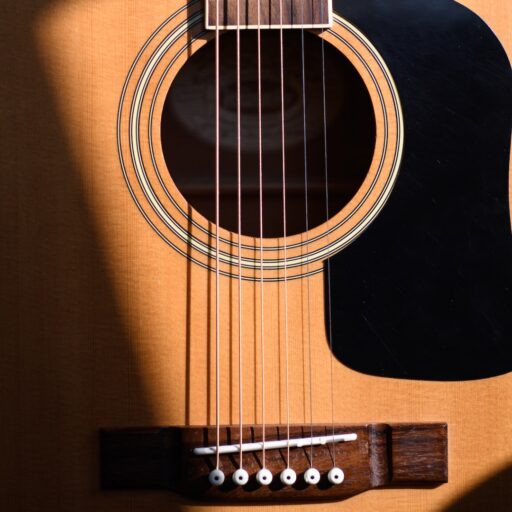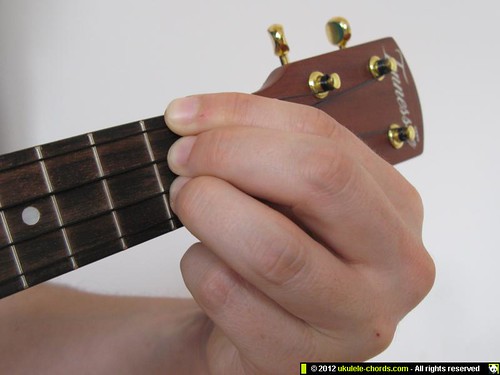Support our educational content for free when you purchase through links on our site. Learn more
Master Ukulele Tuning: 7 Essential Tunings You Must Try in 2025 🎸✨
Have you ever picked up a ukulele only to realize it sounds… well, a bit off? You’re not alone! At Guitar Brands™, we’ve seen countless players struggle with tuning, but here’s a secret: mastering ukulele tuning is the gateway to unlocking its magical sound
. From the classic bright twang of standard GCEA to the mysterious allure of fifths tuning, this guide dives into every aspect you need to know to tune like a pro and explore new sonic horizons.Did you know the ukulele’s signature “re-entrant” tuning (that high G string) is what gives it its uniquely cheerful voice? But what if you want a deeper, richer tone? Or maybe you’re curious about how legends like Israel Kamakawiwoʻole tuned their ukes? Stick around, because we’re about to unravel the history, science, and secrets behind ukulele tuning — plus the top 7 tunings you absolutely need to try in 2025. Ready to tune up and strum out your best sound ever? Let’s dive in!
Key Takeaways
- Standard GCEA tuning remains the most popular and beginner-friendly choice, but alternate tunings like low-G and fifths tuning (CGDA) open exciting new musical possibilities.
- Using a clip-on tuner like the Korg Pitchclip 2 or apps such as Fender Tune ensures fast, accurate tuning every time.
- Understanding the science of pitch, string tension, and re-entrant vs. linear tuning helps you troubleshoot and maintain tuning stability.
- Regular maintenance and string care dramatically improve tuning longevity and sound quality.
- Experimenting with famous songs’ tunings can help you play along authentically and expand your repertoire.
Ready to upgrade your tuning game?
👉 Shop recommended tuners and accessories:
- Korg Pitchclip 2 on Amazon | Sweetwater
- Fender Tune App (iOS & Android)
- Aquila Strings for alternate tunings
Dive in, tune up, and let your ukulele sing! 🎶
Table of Contents
- Quick Tips and Facts About Ukulele Tuning 🎸🔧
- Strumming Through Time: The Fascinating History of Ukulele Tuning 🌺🎶
- How to Tune a Ukulele Like a Pro: Step-by-Step Guide for Perfect Pitch 🎯🎵
- Top 7 Ukulele Tunings You Need to Know: From Standard to Exotic Variations 🎼✨
- Choosing the Right Tuner: Clip-Ons, Apps, and More for Accurate Ukulele Tuning 📱🎛️
- Troubleshooting Ukulele Tuning Issues: Common Problems and How to Fix Them 🛠️❌
- The Science Behind Ukulele Tuning: Understanding Pitch, Frequency, and String Tension 🔬🎶
- Advanced Ukulele Tuning Techniques: Alternate Tunings and Creative Soundscapes 🎨🎸
- Ukulele Tuning Maintenance: How to Keep Your Instrument in Tune Longer ⏳✅
- Famous Ukulele Songs and Their Tunings: Play Along with the Pros 🎤🎵
- Conclusion: Mastering Ukulele Tuning for Endless Musical Fun 🎉🎶
- Recommended Links for Ukulele Enthusiasts 🌐🎸
- FAQ: Your Ukulele Tuning Questions Answered ❓🎵
- Reference Links and Resources for Deeper Learning 📚🔗
Quick Tips and Facts About Ukulele Tuning 🎸🔧 {#quick-tips-and-facts-about-ukulele-tuning-🎸🔧}
Welcome to the wonderful world of ukulele tuning! Whether you’re a newbie or a seasoned uke player, getting your instrument in tune is the golden ticket to sweet sounds. At Guitar Brands™, we’ve tuned thousands of ukuleles and learned a few tricks along the way. Let’s kick off with some quick tips and fascinating facts to get you strumming in harmony fast!
Quick Tips for Perfect Ukulele Tuning
- Standard tuning is GCEA — the most common and beginner-friendly tuning for soprano, concert, and tenor ukuleles.
- Low-G vs. High-G strings: Most ukuleles come with a high-G string (re-entrant tuning), but switching to a low-G string gives a fuller, more guitar-like sound.
- Use a chromatic tuner for best accuracy — clip-on tuners like the Korg Pitchclip 2 or smartphone apps like Fender Tune or gStrings are fantastic.
- Tune up to pitch, not down: Always tune your strings by tightening them to the correct pitch to maintain stability and avoid slack.
- Tune regularly: Temperature, humidity, and playing style affect tuning, so check before every session.
Fun Ukulele Tuning Facts
- The ukulele originated in Hawaii in the late 19th century, evolving from Portuguese string instruments.
- The re-entrant tuning (high G string) is unique to ukuleles and gives that signature bright, jangly sound.
- Baritone ukuleles typically use DGBE tuning, matching the top four strings of a guitar.
- Ukulele strings are usually nylon or fluorocarbon, which stretch differently than steel strings on guitars, affecting tuning stability.
Want to dive deeper into the nuances of tuning? Keep reading—we’re about to unravel everything from the history of ukulele tuning to advanced alternate tunings and troubleshooting hacks! 🎶
For more ukulele insights, check out our ukulele guide at Guitar Brands™.
Strumming Through Time: The Fascinating History of Ukulele Tuning 🌺🎶 {#strumming-through-time-the-fascinating-history-of-ukulele-tuning-🌺🎶}
Ukulele tuning isn’t just about hitting the right notes—it’s a story woven through time and culture. Let’s take a quick stroll through the history of how ukulele tuning evolved into the art form it is today.
Origins of Ukulele Tuning
- The ukulele was introduced to Hawaii by Portuguese immigrants in the late 1800s, based on the machete and braguinha instruments.
- Early ukuleles were tuned in various ways, but the now-standard GCEA tuning was popularized by Hawaiian musicians to suit their playing styles and the island’s musical traditions.
- The distinctive re-entrant tuning (high G string) emerged to create a bright, percussive sound that complemented Hawaiian slack-key guitar styles.
Evolution of Alternate Tunings
- In the 1920s and 1930s, D tuning (aDF#B) gained popularity, especially for sopranino and sopranissimo ukuleles, offering a brighter, higher pitch.
- Baritone ukuleles adopted DGBE tuning, aligning with the top four strings of a guitar, making it easier for guitarists to transition.
- Modern players experiment with low-G tuning and even fifths tuning (CGDA) to explore new sonic landscapes and match mandolin or violin tunings.
Why Does History Matter?
Understanding the roots of ukulele tuning helps you appreciate why certain tunings sound the way they do and how they fit into musical genres. It also opens the door to experimenting with alternate tunings confidently.
For a deep dive into ukulele history and culture, visit Ukulele History on UkuleleHunt.
How to Tune a Ukulele Like a Pro: Step-by-Step Guide for Perfect Pitch 🎯🎵 {#how-to-tune-a-ukulele-like-a-pro-step-by-step-guide-for-perfect-pitch-🎯🎵}
Ready to get your ukulele singing in tune? Here’s our step-by-step guide to tuning your ukulele like a seasoned pro, whether you’re using a tuner, piano, or your ear.
Step 1: Know Your Standard Tuning Notes
- From top string (closest to your face) to bottom: G4 (high G), C4, E4, A4
- If you have a low-G string, the top string is tuned to G3 (one octave lower).
Step 2: Choose Your Tuning Method
- Clip-on tuner: Attach to your ukulele’s headstock; pluck each string and adjust tuning pegs until the tuner shows the correct note.
- Tuning apps: Apps like Fender Tune or Cleartune use your phone’s mic to detect pitch. Play each string and adjust accordingly.
- Relative tuning: Tune the C string first (using a reference pitch), then tune other strings relative to it by matching fretted notes.
Step 3: Tune Each String
- Start with the C string (second from top) as your anchor.
- Tune the G string (top) to G4 (or G3 for low-G).
- Tune the E string (third from top) to E4.
- Tune the A string (bottom) to A4.
Step 4: Fine-Tune and Check
- Play common chords (C, F, G7) to check for any buzzing or off-pitch notes.
- Retune as necessary, especially after the first few minutes of playing since new strings stretch.
Step 5: Maintain Your Tuning
- Tune up to pitch, never down.
- Store your ukulele in a stable environment to reduce tuning drift.
Pro Tip: Use a Chromatic Tuner Set to 440 Hz for universal pitch accuracy.
Top 7 Ukulele Tunings You Need to Know: From Standard to Exotic Variations 🎼✨ {#top-7-ukulele-tunings-you-need-to-know-from-standard-to-exotic-variations-🎼✨}
At Guitar Brands™, we love exploring the sonic palette of the ukulele. Beyond the classic GCEA, there’s a whole universe of tunings waiting to be discovered. Here are the top 7 ukulele tunings that every player should know:
| # | Tuning Name | Notes (Top to Bottom) | Description & Usage |
|---|---|---|---|
| 1 | Standard (Re-entrant) | G4 C4 E4 A4 | Most common, bright and jangly sound. |
| 2 | Low-G | G3 C4 E4 A4 | Adds depth and warmth, great for strumming. |
| 3 | D Tuning | A4 D4 F#4 B4 | Popular in the 1920s, good for D major keys. |
| 4 | Baritone (Guitar-like) | D3 G3 B3 E4 | Matches guitar’s top four strings, mellow tone. |
| 5 | Fifths Tuning | C3 G3 D4 A4 | Like mandolin tuning, great for melodic playing. |
| 6 | Slack-Key Tuning | G4 C4 E4 G4 | Hawaiian style, open tuning for slide and fingerpicking. |
| 7 | Open C Tuning | G4 C4 E4 C5 | Creates a C major chord when strummed open. |
Why Try Alternate Tunings?
- Expand your musical vocabulary
- Match vocal ranges more easily
- Experiment with different genres like jazz, blues, or Hawaiian slack-key
For detailed chord charts and song examples in these tunings, visit Ukulele Tunings Guide on UkuleleGo.
Choosing the Right Tuner: Clip-Ons, Apps, and More for Accurate Ukulele Tuning 📱🎛️ {#choosing-the-right-tuner-clip-ons-apps-and-more-for-accurate-ukulele-tuning-📱🎛️}
Tuning accuracy is everything. At Guitar Brands™, we’ve tested a slew of tuners to find the best options for ukulele players at every level.
| Tuner Type | Pros | Cons | Recommended Models |
|---|---|---|---|
| Clip-on Tuners | Fast, accurate, works in noisy environments | Can be pricey, needs batteries | Korg Pitchclip 2, Snark SN-6 |
| Smartphone Apps | Convenient, often free or cheap | Mic sensitivity varies, less reliable in loud spaces | Fender Tune, gStrings, Cleartune |
| Pedal Tuners | Great for live performers, hands-free | Overkill for casual players, expensive | Boss TU-3, TC Electronic Polytune |
| Chromatic Tuners | Detect all notes, versatile for alternate tunings | Requires some knowledge to use effectively | Peterson StroboClip HD, Korg CA-50 |
Our Favorite: Korg Pitchclip 2
- Design: Compact, lightweight clip-on
- Functionality: Fast, bright display, accurate to ±1 cent
- Battery Life: Long-lasting with easy replacement
- User Feedback: Praised for reliability and ease of use
Apps We Love
- Fender Tune: Intuitive interface, supports multiple instruments
- gStrings: Android favorite with chromatic tuning and tone generator
Pro Tip: Always calibrate your tuner to 440 Hz standard pitch for consistency.
Troubleshooting Ukulele Tuning Issues: Common Problems and How to Fix Them 🛠️❌ {#troubleshooting-ukulele-tuning-issues-common-problems-and-how-to-fix-them-🛠️❌}
Nothing kills the vibe faster than a ukulele that won’t stay in tune. Here’s how to troubleshoot the most common tuning headaches:
Problem 1: Strings Go Out of Tune Quickly
- Cause: New strings stretching, loose tuning pegs, or environmental changes.
- Fix: Stretch new strings gently before tuning, tighten tuning pegs, and keep your uke in a stable climate.
Problem 2: Tuning Pegs Slip or Are Hard to Turn
- Cause: Worn gears or loose screws.
- Fix: Tighten screws on tuners, lubricate gears with a tiny drop of machine oil, or replace faulty tuners (brands like Grover or Gotoh offer quality replacements).
Problem 3: Buzzing or Dead Notes
- Cause: Poor tuning, string height issues, or fret problems.
- Fix: Tune carefully, check string action, and inspect frets for wear or damage.
Problem 4: Intonation Sounds Off Even When Tuned
- Cause: Nut or saddle issues, or uneven fret placement.
- Fix: Professional setup recommended; a luthier can adjust saddle position or nut slots for perfect intonation.
Quick Fix: Use a chromatic tuner with a microphone mode to detect subtle pitch issues, especially in noisy environments.
The Science Behind Ukulele Tuning: Understanding Pitch, Frequency, and String Tension 🔬🎶 {#the-science-behind-ukulele-tuning-understanding-pitch-frequency-and-string-tension-🔬🎶}
Tuning a ukulele isn’t just an art—it’s a bit of science too! Understanding the physics behind tuning can help you get better results and appreciate your instrument more.
Pitch and Frequency
- Pitch corresponds to the frequency of vibration, measured in Hertz (Hz).
- Standard tuning frequencies for ukulele strings are approximately:
- G4: 392 Hz (high-G) or G3: 196 Hz (low-G)
- C4: 261.63 Hz
- E4: 329.63 Hz
- A4: 440 Hz
String Tension and Length
- Pitch depends on string tension, mass, and length.
- Tightening a string increases tension and raises pitch; loosening lowers pitch.
- The scale length (distance from nut to saddle) affects tension needed for a given pitch. Tenor ukuleles have longer scale lengths, requiring different string gauges.
Re-entrant vs. Linear Tuning
- Re-entrant tuning (high G) means the top string is tuned higher than the C string, creating a unique sound texture.
- Linear tuning (low G) tunes strings in ascending order from low to high pitch, like a guitar.
Why Does This Matter?
Knowing these principles helps you choose the right strings and tunings for your style and instrument size, and troubleshoot tuning stability issues.
For a deeper dive into string physics, check out String Theory on Physics Stack Exchange.
Advanced Ukulele Tuning Techniques: Alternate Tunings and Creative Soundscapes 🎨🎸 {#advanced-ukulele-tuning-techniques-alternate-tunings-and-creative-soundscapes-🎨🎸}
Ready to break free from the standard and explore the ukulele’s full sonic potential? Let’s talk about advanced tuning techniques that can transform your playing.
1. Fifths Tuning (CGDA)
- Popular among mandolin players adapting to ukulele.
- Offers wider melodic range and familiar fingerings for string players.
- Requires specialized strings like Aquila’s 31U set or custom nylon strings.
- May need nut adjustments for thicker strings.
2. Slack-Key and Open Tunings
- Tunings like GCEA (open C major) or GCEG allow for open chords and drone effects.
- Perfect for fingerstyle and Hawaiian slack-key styles.
3. Drop Tunings
- Lowering the pitch of one or more strings for a darker tone or to suit vocal ranges.
- Example: Drop A tuning (G C E G) for a haunting sound.
4. Hybrid Tunings
- Combining low-G with re-entrant strings or mixing string gauges for unique textures.
Tips for Experimenting
- Use a chromatic tuner to accurately set non-standard pitches.
- Be patient with string stretching and tuning stability.
- Document your tunings for easy recall.
Real-World Example:
Steve Zawacki’s experiments with tenor ukuleles tuned in fifths (G3-D4-A4-E5) using a mix of standard and fishing line strings show how creative tuning can open new musical doors.
Explore more about alternate tunings in our Guitar Brand Guides.
Ukulele Tuning Maintenance: How to Keep Your Instrument in Tune Longer ⏳✅ {#ukulele-tuning-maintenance-how-to-keep-your-instrument-in-tune-longer-⏳✅}
Tuning isn’t a one-and-done deal—keeping your ukulele in tune requires some TLC. Here’s how to maintain tuning stability and extend your instrument’s sweet spot.
String Care
- Change strings regularly: Old strings lose elasticity and break more easily.
- Stretch new strings: Gently pull strings after tuning to help them settle faster.
- Clean strings: Wipe down after playing to remove oils and dirt.
Environmental Factors
- Humidity control: Ukuleles hate extremes; use a humidifier or dehumidifier as needed.
- Temperature stability: Avoid leaving your uke in hot cars or near heaters.
Hardware Checks
- Tighten tuning pegs: Loose tuners cause slipping.
- Lubricate tuners: A drop of light machine oil keeps gears smooth.
- Inspect nut and saddle: Proper string seating prevents tuning issues.
Storage Tips
- Store your ukulele in a hard case or padded gig bag.
- Loosen strings slightly if storing long-term.
Pro Maintenance
- Annual professional setup can keep your ukulele playing and tuning like new.
Famous Ukulele Songs and Their Tunings: Play Along with the Pros 🎤🎵 {#famous-ukulele-songs-and-their-tunings-play-along-with-the-pros-🎤🎵}
Want to impress friends or jam with your favorite tunes? Knowing the tunings used in famous ukulele songs can give you a leg up!
| Song Title | Artist/Band | Ukulele Tuning Used | Notes |
|---|---|---|---|
| “Somewhere Over the Rainbow” | Israel Kamakawiwoʻole | Standard GCEA | Classic, perfect for beginners |
| “Riptide” | Vance Joy | Standard GCEA | Popular modern hit |
| “Hey, Soul Sister” | Train | Standard GCEA | Bright, upbeat strumming |
| “Can’t Help Falling in Love” | Elvis Presley (cover) | Low-G GCEA | Adds warmth to the melody |
| “Here Comes the Sun” | The Beatles | D Tuning (aDF#B) | Brighter, open sound |
| “Blackbird” | The Beatles | Open C (GCEA with C5) | Fingerpicking favorite |
Pro Tip:
Experiment with the tuning used in the original recording to capture the authentic vibe.
For chord charts and tutorials on these songs, visit Ukulele Song Tutorials at UkuleleGo.
Conclusion: Mastering Ukulele Tuning for Endless Musical Fun 🎉🎶 {#conclusion-mastering-ukulele-tuning-for-endless-musical-fun-🎉🎶}
There you have it—a comprehensive journey through the art and science of ukulele tuning! From the classic GCEA standard to adventurous fifths tuning, understanding how to tune your ukulele unlocks a world of musical possibilities. Remember, tuning is both a skill and a ritual that connects you to your instrument and the rich history behind it.
Whether you’re using a trusty Korg Pitchclip 2 tuner, a handy smartphone app like Fender Tune, or experimenting with alternate tunings like CGDA for mandolin-style playing, the key is patience and practice. Don’t shy away from exploring new tunings—they can inspire creativity and fresh sounds.
If you’ve ever struggled with tuning stability or buzzing strings, our troubleshooting tips and maintenance advice will keep your uke singing sweetly for years to come. And if you want to play along with your favorite songs, matching their tunings can bring you closer to the pros.
So, tune up, strum out, and let your ukulele be your voice! 🎸✨
Recommended Links for Ukulele Enthusiasts 🌐🎸 {#recommended-links-for-ukulele-enthusiasts-🌐🎸}
Ready to gear up or dive deeper? Here are some of our top picks for tuners, strings, and learning resources:
-
Korg Pitchclip 2 Clip-On Tuner:
Amazon | Sweetwater | Korg Official Website -
Fender Tune App (iOS & Android):
Fender Tune iOS | Fender Tune Android -
Aquila 31U Nylon Mandola String Set (for fifths tuning):
Amazon | Aquila Official Website -
Recommended Books:
Explore more ukulele gear and guides at our Guitar Brands Showcase.
FAQ: Your Ukulele Tuning Questions Answered ❓🎵 {#faq-your-ukulele-tuning-questions-answered-❓🎵}
What is the standard tuning for a ukulele?
The standard tuning for soprano, concert, and tenor ukuleles is GCEA, with the G string often tuned as a high G (re-entrant tuning). This means the strings from top (closest to your face) to bottom are tuned to G4, C4, E4, and A4 respectively. Baritone ukuleles typically use DGBE tuning, matching the top four strings of a guitar.
How do I tune my ukulele to sound like my favorite song?
To match your ukulele’s tuning to a favorite song:
- Identify the song’s original ukulele tuning (often standard GCEA).
- Use a chromatic tuner or tuning app to set your strings to the correct pitches.
- If the song uses an alternate tuning (like D tuning or fifths tuning), adjust your strings accordingly.
- Practice the chord shapes and fingerings in that tuning for authentic sound.
Many online tutorials and songbooks specify the tuning used, so checking those resources helps. For example, Israel Kamakawiwoʻole’s “Somewhere Over the Rainbow” uses standard tuning, while some Beatles covers may use D tuning.
What are the different types of ukulele tunings and when to use them?
Ukulele tunings vary by style and preference:
- Standard GCEA: Most versatile and beginner-friendly.
- Low-G tuning: Adds depth, great for strumming and fuller sound.
- D tuning (aDF#B): Popular in vintage Hawaiian music and for sopranino ukuleles.
- Baritone tuning (DGBE): Matches guitar tuning, ideal for guitarists switching to uke.
- Fifths tuning (CGDA): For mandolin players or melodic styles.
- Open tunings (e.g., slack-key): For fingerpicking and slide styles.
Choose based on the genre, vocal range, and the sound you want to achieve.
Can I use a guitar tuner to tune my ukulele?
✅ Yes! A chromatic guitar tuner can tune a ukulele since it detects all pitches. However, some guitar tuners may not be sensitive enough for the higher pitches of ukulele strings, especially the high G. Clip-on tuners designed for ukuleles or chromatic tuners with a wide range are preferred for accuracy.
How often should I tune my ukulele to keep it sounding its best?
Tune your ukulele:
- Before every playing session to ensure pitch accuracy.
- After changing strings, as new strings stretch and settle.
- When environmental conditions change (temperature, humidity).
Regular tuning keeps your playing sounding sharp and prevents bad habits.
What are some common ukulele tuning problems and how to fix them?
Common issues include:
- Strings slipping: Tighten tuning pegs or replace faulty tuners.
- Strings going out of tune quickly: Stretch new strings, avoid extreme temperature changes.
- Buzzing or dead notes: Check string height and fret condition; get a professional setup if needed.
- Difficulty tuning high G string: Consider switching to low G for stability.
Are there any apps or online tools that can help me tune my ukulele?
Absolutely! Some of the best include:
- Fender Tune: User-friendly, supports multiple instruments.
- gStrings (Android): Chromatic tuner with tone generator.
- Ukulele Buddy Online Tuner: Free web-based tuner with microphone mode for real-time tuning.
These tools provide visual feedback and tone references, making tuning easier and more precise.
Reference Links and Resources for Deeper Learning 📚🔗 {#reference-links-and-resources-for-deeper-learning-📚🔗}
- Ukulele Tuning Guide – UkuleleBuddy
- Free Ukulele Tuner – UkuleleBuddy
- Mandolin Cafe Forum: Tenor Ukulele Tuned in Fifths
- Aquila Strings Official Website
- Korg Official Tuner Page
- Fender Tune App
- Physics of String Instruments – Physics Stack Exchange
For more ukulele gear and guides, explore our Guitar Brands Showcase.






